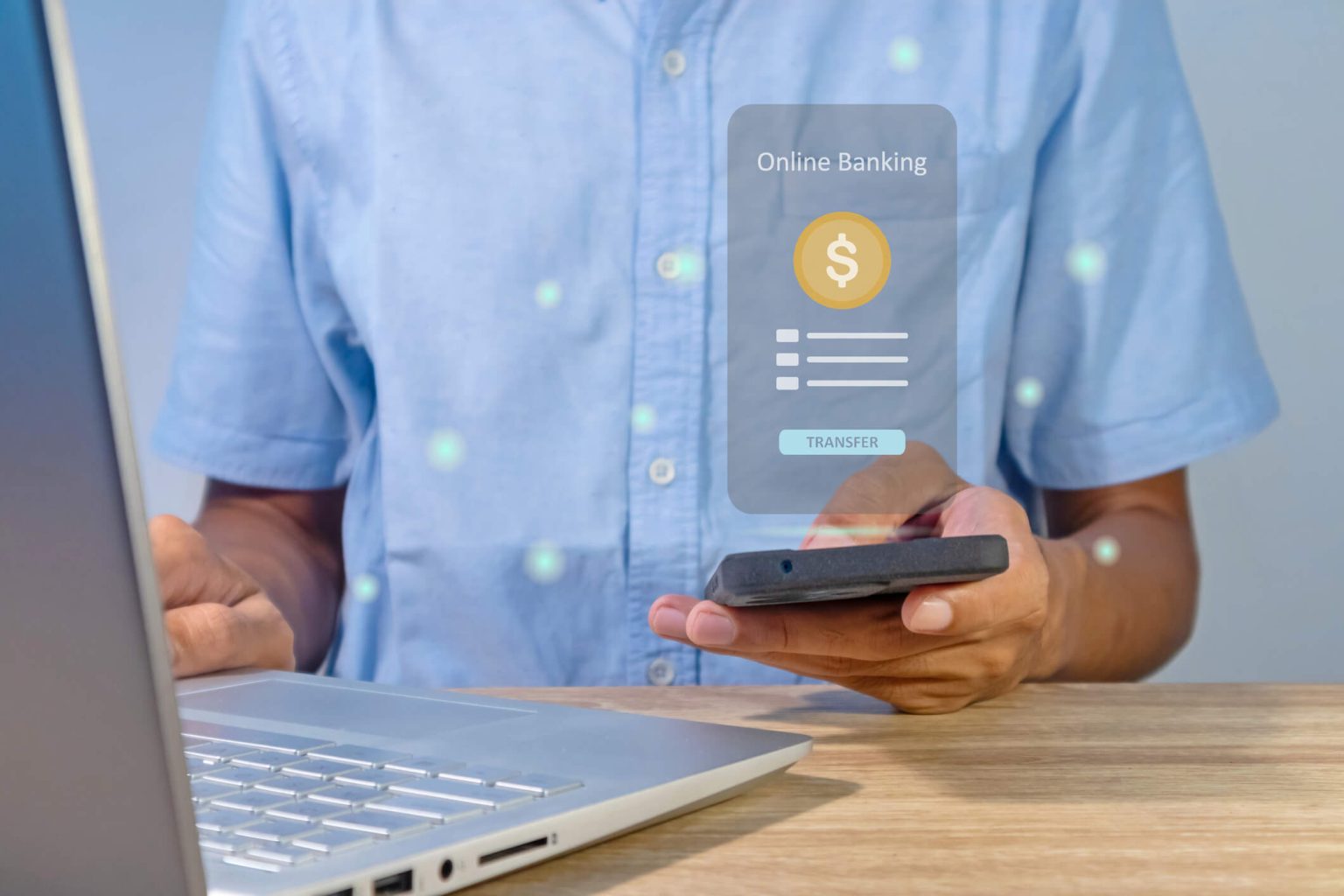User Privacy and Data Protection in Cloud Payments
In the rapidly evolving digital landscape, cloud payments have emerged as a cornerstone of modern financial transactions, facilitating seamless exchanges across borders and platforms. However, the convenience of cloud payments is accompanied by significant privacy and data protection challenges. This article delves into the crucial aspects of user privacy and data protection in cloud payments, covering key concepts such as Privacy-by-Design principles, End-to-End Encryption, and User Consent Management.
Understanding the Importance of User Privacy and Data Protection in Cloud Payments
User privacy and data protection are of utmost importance in cloud payment systems. When individuals make payments through cloud-based platforms, they entrust their sensitive information, such as credit card details and personal data, to these systems. It is essential for businesses to recognize the significance of protecting this information and ensuring that it remains confidential and secure. Failure to prioritize user privacy and data protection can lead to severe consequences, including financial loss, reputational damage, and legal implications.
Privacy-by-Design Principles in Cloud Payment Solutions: A Comprehensive Approach

Privacy-by-design principles are a comprehensive approach to ensuring user privacy and data protection in cloud payment solutions. These principles involve integrating privacy considerations into the design and development of cloud payment systems from the outset. By implementing privacy-by-design principles, businesses can proactively address privacy concerns and mitigate potential risks. This approach includes practices such as data minimization, user consent, transparency, and accountability.
Data minimization involves collecting and retaining only the necessary data required for payment transactions, reducing the risk of unauthorized access or misuse. User consent ensures that individuals have control over their personal information and are aware of how it will be used. Transparency involves providing clear and concise information about data collection, storage, and processing practices. Accountability requires businesses to take responsibility for protecting user privacy and implementing appropriate security measures.
The Role of End-to-End Encryption in Ensuring Data Privacy in the Payment Cloud

End-to-end encryption plays a crucial role in ensuring data privacy in the payment cloud. This encryption method ensures that data is encrypted at the point of origin and remains encrypted throughout its journey to the recipient. By encrypting data, businesses can prevent unauthorized access and protect sensitive information from being intercepted or compromised. End-to-end encryption provides an additional layer of security, making it extremely difficult for hackers or malicious actors to decipher the encrypted data.
In cloud payment systems, end-to-end encryption ensures that payment information, including credit card details and personal data, is securely transmitted and stored. This encryption method ensures that even if a breach occurs, the stolen data remains unreadable and unusable. By implementing end-to-end encryption, businesses can instill trust in their customers and demonstrate their commitment to protecting user privacy.
Assessing the Risks and Vulnerabilities in Cloud Payment Systems
Cloud payment systems are not without risks and vulnerabilities. It is essential for businesses to assess these risks and vulnerabilities to effectively protect user privacy and data in cloud payments. Some common risks and vulnerabilities include:
- Data breaches: Cloud payment systems can be targeted by hackers seeking to gain unauthorized access to sensitive information. A data breach can result in the exposure of customer data, leading to financial loss and reputational damage.
- Insider threats: Employees or individuals with authorized access to cloud payment systems can pose a risk to user privacy. Insider threats can involve intentional or unintentional actions that compromise the security of sensitive information.
- Insecure APIs: Application Programming Interfaces (APIs) are used to facilitate communication between different software systems. Insecure APIs can be exploited by attackers to gain unauthorized access to cloud payment systems and steal sensitive data.
- Lack of encryption: Without proper encryption measures, sensitive information transmitted or stored in cloud payment systems can be vulnerable to interception and unauthorized access.
- Inadequate access controls: Weak access controls can allow unauthorized individuals to gain access to sensitive information, compromising user privacy.
By identifying and addressing these risks and vulnerabilities, businesses can implement appropriate security measures to protect user privacy and data in cloud payment systems.
Best Practices for Securing User Privacy and Data Protection in Cloud Payments

To ensure user privacy and data protection in cloud payments, businesses should adopt best practices that prioritize security and mitigate potential risks. Some best practices include:
- Implementing strong authentication measures: Businesses should require strong passwords, multi-factor authentication, and other authentication methods to ensure that only authorized individuals can access cloud payment systems.
- Regularly updating and patching systems: Keeping cloud payment systems up to date with the latest security patches and updates helps protect against known vulnerabilities and exploits.
- Conducting regular security audits and assessments: Regular security audits and assessments can help identify any weaknesses or vulnerabilities in cloud payment systems, allowing businesses to take appropriate action to address them.
- Encrypting sensitive data: Implementing end-to-end encryption for sensitive data ensures that it remains secure, even if a breach occurs.
- Training employees on security best practices: Educating employees about security best practices, such as recognizing phishing attempts and avoiding suspicious links or attachments, can help prevent security breaches.
- Monitoring and detecting suspicious activities: Implementing robust monitoring systems can help detect and respond to any suspicious activities or unauthorized access attempts in real-time.
By following these best practices, businesses can enhance the security of their cloud payment systems and protect user privacy and data.
Compliance with Data Protection Regulations: Navigating the Legal Landscape
Compliance with data protection regulations is crucial for businesses operating cloud payment systems. Various regulations, such as the General Data Protection Regulation (GDPR) in the European Union, impose strict requirements on the collection, storage, and processing of personal data. Failure to comply with these regulations can result in significant fines and legal consequences.
To navigate the legal landscape, businesses should:
- Understand the applicable regulations: Businesses must familiarize themselves with the data protection regulations that apply to their operations. This includes understanding the requirements for obtaining user consent, data retention periods, and the rights of individuals regarding their personal data.
- Implement privacy policies and notices: Privacy policies and notices should clearly outline how user data is collected, stored, and processed in cloud payment systems. These policies should also inform users about their rights and provide contact information for any privacy-related inquiries.
- Obtain user consent: Businesses should obtain explicit user consent before collecting and processing personal data. Consent should be freely given, specific, informed, and unambiguous.
- Establish data protection practices: Implementing data protection practices, such as data minimization, encryption, and access controls, helps ensure compliance with data protection regulations.
- Appoint a Data Protection Officer (DPO): Depending on the jurisdiction and the scale of data processing, businesses may be required to appoint a DPO to oversee data protection practices and ensure compliance with regulations.
By proactively addressing data protection regulations, businesses can demonstrate their commitment to user privacy and avoid legal repercussions.
The Impact of Data Breaches on User Privacy in Cloud Payment Systems
Data breaches can have a significant impact on user privacy in cloud payment systems. When a data breach occurs, sensitive information, such as credit card details and personal data, can be exposed to unauthorized individuals. The consequences of a data breach can include:
- Financial loss: Data breaches can result in financial loss for both businesses and individuals. Stolen credit card details can be used for fraudulent transactions, leading to financial repercussions for affected individuals and businesses.
- Reputational damage: Data breaches can severely damage a business’s reputation. Customers may lose trust in a company that fails to protect their sensitive information, leading to a loss of business and potential legal consequences.
- Identity theft: Exposed personal data can be used for identity theft, where malicious actors impersonate individuals and engage in fraudulent activities.
- Legal implications: Data breaches can lead to legal consequences, especially if businesses fail to comply with data protection regulations. Fines and legal actions can be imposed on businesses that do not adequately protect user privacy.
To mitigate the impact of data breaches, businesses should prioritize security measures, such as encryption, access controls, and monitoring systems. Additionally, having a robust incident response plan in place can help businesses respond effectively to data breaches and minimize the potential damage.
Addressing the Challenges of Balancing User Convenience and Data Privacy in Cloud Payments
Balancing user convenience and data privacy is a significant challenge in cloud payments. While users expect seamless and convenient payment experiences, businesses must also prioritize the protection of sensitive information. Some challenges in achieving this balance include:
- User experience: Businesses must ensure that security measures do not hinder the user experience. Lengthy authentication processes or excessive security checks can frustrate users and lead to abandoned transactions.
- Data collection and retention: Businesses need to strike a balance between collecting the necessary data for payment transactions and minimizing the collection and retention of personal information. Collecting excessive data can increase the risk of data breaches and compromise user privacy.
- Third-party integrations: Cloud payment systems often rely on third-party integrations, such as payment gateways or customer relationship management systems. Ensuring the security and privacy practices of these third-party providers can be challenging.
To address these challenges, businesses should prioritize user-centric design and consider user feedback when implementing security measures. Conducting user testing and gathering insights can help businesses identify areas where user convenience can be improved without compromising data privacy.
Emerging Technologies and Innovations in User Privacy and Data Protection for Cloud Payments
Emerging technologies and innovations are continuously shaping the landscape of user privacy and data protection in cloud payments. Some notable advancements include:
- Tokenization: Tokenization replaces sensitive data, such as credit card numbers, with unique tokens. These tokens are used for payment transactions, reducing the risk of exposing sensitive information in the event of a breach.
- Biometric authentication: Biometric authentication methods, such as fingerprint or facial recognition, provide an additional layer of security and convenience for users. These methods can enhance user privacy by reducing reliance on traditional passwords.
- Blockchain technology: Blockchain technology offers decentralized and immutable record-keeping, enhancing the security and privacy of transactions. By eliminating the need for intermediaries, blockchain can reduce the risk of data breaches and unauthorized access.
- Artificial Intelligence (AI) and Machine Learning (ML): AI and ML technologies can be utilized to detect and prevent fraudulent activities in cloud payment systems. These technologies can analyze patterns and behaviors to identify potential threats and anomalies.
By staying updated with emerging technologies and innovations, businesses can leverage these advancements to enhance user privacy and data protection in cloud payments.
FAQs:
Q.1: What are the privacy-by-design principles in cloud payment solutions?
Privacy-by-design principles involve integrating privacy considerations into the design and development of cloud payment systems. These principles include data minimization, user consent, transparency, and accountability.
Q.2: How does end-to-end encryption ensure data privacy in the payment cloud?
End-to-end encryption ensures that data is encrypted at the point of origin and remains encrypted throughout its journey to the recipient. This encryption method prevents unauthorized access and protects sensitive information from being intercepted or compromised.
Q.3: What are the common risks and vulnerabilities in cloud payment systems?
Common risks and vulnerabilities in cloud payment systems include data breaches, insider threats, insecure APIs, lack of encryption, and inadequate access controls.
Q.4: What are the best practices for securing user privacy in cloud payments?
Best practices for securing user privacy in cloud payments include implementing strong authentication measures, regularly updating and patching systems, conducting security audits and assessments, encrypting sensitive data, training employees on security best practices, and monitoring and detecting suspicious activities.
Q.5: How can businesses ensure compliance with data protection regulations in cloud payment systems?
Businesses can ensure compliance with data protection regulations by understanding the applicable regulations, implementing privacy policies and notices, obtaining user consent, establishing data protection practices, and appointing a Data Protection Officer (DPO) if required.
Conclusion
In conclusion, user privacy and data protection are paramount in cloud payment systems. Privacy-by-design principles and end-to-end encryption play crucial roles in safeguarding sensitive information. However, businesses must also address the risks and vulnerabilities associated with cloud payments while ensuring compliance with data protection regulations. By adopting best practices and staying updated with emerging technologies, businesses can strike a balance between user convenience and data privacy in the payment cloud. It is essential for businesses to prioritize user privacy and data protection to maintain trust, protect sensitive information, and mitigate potential risks.










